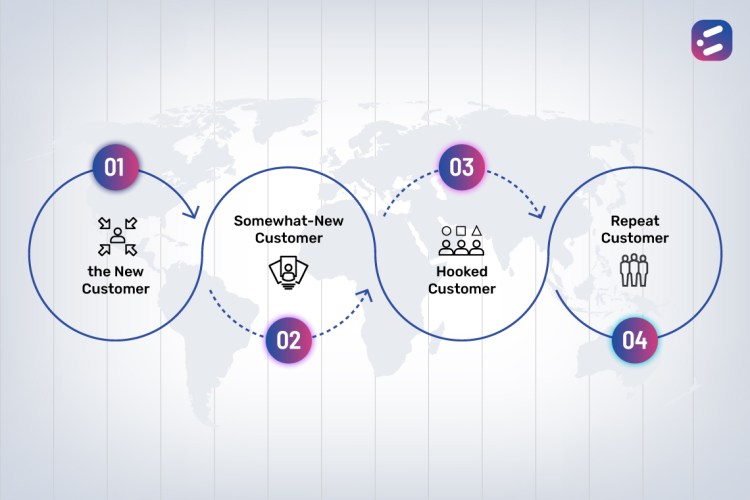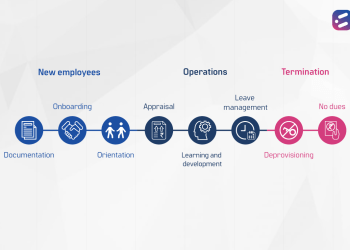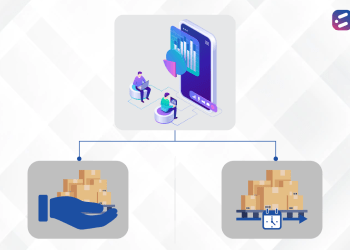According to a report by Economic Times, 97% of the mid-size and enterprise-sized businesses in India believe customer experience (CX) innovation is required to protect their business from competitors. The same report also found that more Indian enterprises are investing in CX as a means to grow their business as compared to other countries in the Asia Pacific region.
The study also revealed that 88% of Indian organizations accelerated their CX projects over the past 12 months compared to their counterparts in South Korea (67%), Australia (65%), Singapore (62%), and Japan (37%).
So, if you want to be one step or two ahead of your competition it is important to understand how every stage of customer interaction can be enhanced by digitalization.
We’ll illustrate here just how digital transformation makes an impact at every stage of the customer experience with the case of an e-commerce retail app, though the steps are more or less common to all sectors.
Four Stages Of Customer Experience :
First, the New Customer
As business guru Peter Drucker said, “The purpose of a business is to create a customer.” Customers demand better experiences. They demand performance, responsiveness, and consistency. Unfortunately, a lack of usable, harmonized data inevitably leads to a less than impressive customer experience. One needs to increase awareness to bring in new customers.
It is possible to harness data to create precise customer targeting options. For instance, one can improve targeting based on data gathered from existing customers, thus improving ROI on advertising. So make it a point to harness data to create more awareness of your product or service and that way bring in new customers.
Next, the Somewhat-New Customer
More than 2,000 apps are submitted to the Google Play Store and Apple’s App Store daily, and the average user takes 3 seconds to decide whether they want to download your app!
That doesn’t give you much time at all. Here, the key is to use new and existing data to enhance customer experience by providing tailored content. For example, if you know that A is a woman in her 30s and B, a man in his 50s, deliver different kinds of content to each, to encourage clicks and downloads.
You can create customer personas for different kinds of people (discount seekers, brand-conscious shoppers, festive bulk buyers, etc) and push unique marketing content to new customers who match these profiles. AI-led strategies help create personalized campaigns, encourage app downloads and trials and boost customer engagement.
Then, there’s the Hooked Customer
For the customer who has already downloaded your app, comes the next stage of creating a personalized app CX.
App personalization is the process of building a mobile app to meet the needs of specific audiences, rather than a one-size-fits-all experience.
In 2018, in a report by Epsilon, to help brands better understand how personalization efforts can be used to enhance relationships with consumers, produce customer loyalty and positively impact the bottom line, it was revealed that 80% of respondents were more likely to do business with a company if it offers personalized experiences and 90% found personalization appealing.
There are several ways to personalize your app.
- Use AI to capture your users’ in-app behaviors, actions, inactions, responses, and interactions to enrich your user view
- Customize the app navigation experience by analyzing your customers browsing, click behavior, and consumption history
- Build a solid foundation of user data and offer personalized products, offers, or content based on interests, user location, time of the day, weather, and so on
- Consider an AI-powered chatbot to offer real-time responses to app visitors and make appropriate suggestions
- Possibly developing a sentiment analysis tool based on customer data and product reviews, to identify pain points, trends and gaps is another way to go
Finally, the Repeat Customer
Farming repeat customers is cheaper than constantly hunting new customers. According to a study, after one purchase, a customer has a 27% chance of returning to your store, but if you can get that customer to come back and make a second and third purchase they have a 54% chance of making another purchase.
Therefore, the idea is to get customers who will continue to come back, which is another reason e-commerce companies prioritize the customer experience. Here are some Digital Transformation strategies to increase repeat purchases.
Strategies To Increase Repeat Purchases :
- Use data based on purchase patterns, encouraging additional sales from clients who trust the brand.
- Push recommendations and suggestions at different times of the day
- Make it easy for customers who already trust the brand to buy – single-click, suggestions, recommendations, discount notifications, push notifications, etc.
Remember, repeat purchases can boost the revenue of investment (ROI), and ensure sustainable growth.
Digital transformation on the customer experience level requires an enterprise-wide approach, which is what we specialize in at CloudNow. Our digital transformation service will provide a holistic roadmap that puts the customer experience at the core.












